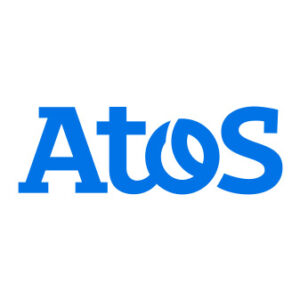Is it still worth investing in mainframe computing?
When you think of mainframe computing, what images does it conjure up? Whatever comes to mind, one thing is clear: Mainframe has come a long way since its invention 60 years ago.
For decades, mainframe provided the sole means of data processing for large companies. Now, it’s only one component of a far more diverse and fast-changing technology environment. Cloud first is becoming the norm, yet very often the prospect of moving mainframe workloads to cloud is too risky, costly and disruptive for enterprises to absorb.
A few of the questions I hear from IT leaders are:
“If I want to replace the mainframe, how should I do it and what are my costs?”
“Is it more expensive to modernize mainframe or choose another platform?”
“Should I keep my mainframe as-is and direct my investment elsewhere?”
Is mainframe computing still compelling?
First, let’s look at the value of mainframe. Quite simply, the wheels of modern business couldn’t turn without it. Mainframe has the capability to handle vast volumes of data and millions of mission-critical transactions with unmatched levels of availability, efficiency, security and performance. Little surprise, therefore, that a 2022 IBM report found that 45 of the top 50 banks, 4 of the top 5 airlines, 7 of the top 10 global retailers and 67 of the Fortune 100 companies leverage mainframe as their core platform.
At the same time, it’s fair to say that some view mainframe as a little old-fashioned. That’s perhaps because the IT professionals with the most mainframe experience are getting older. Younger generations have tended to focus on more novel emerging tech domains.
Mainframe was the preferred data processing platform for decades, but now it’s part of a diverse technology environment. It is more cost-effective for most enterprises to invest in modernizing mainframe than to keep it in steady state or replace it entirely.
One team, not two
So, with a potential skills gap emerging, it makes sense now for companies to consolidate their applications development resources into one team. Then, with the necessary training, a modern DevSecOps function can integrate the mainframe into a unified, agile application development lifecycle. It can develop and maintain one applications portfolio, with some applications deployed to a modernized mainframe environment and others deployed elsewhere.
From this starting point, enterprises can then devise and implement an application modernization and transformation roadmap. Legacy mainframe applications can be refactored for use with modern computer programming languages — for instance to replace old-style COBOL with modern Java — and incorporated into DevOps lifecycles.
Best of both worlds
As far as the data and technology landscape is concerned, we believe the optimum approach for companies is to integrate a modernized mainframe environment seamlessly with their existing hybrid cloud environment. With mainframe’s built-in security, this can be done with the necessary application programming interfaces (APIs) to ensure that the right data is provided to the right system in the right way, with the right level of security. And because low latency is key, mainframe systems should be located near the cloud.
In this way, enterprises can get the best of both worlds. Their mainframe and non-mainframe environments run as part of one larger ecosystem, with some applications running in the cloud and others on a mainframe platform – depending on the type of workload.
Building the case for mainframe
I’ve worked with many enterprises to develop balanced business cases for modernizing the mainframe. These are broadly based on the benefits of a rationalized application development framework and environment, an application refactoring strategy, and savings on software usage and licensing.
I have seen organizations achieve a cost benefit of anything from 20-40% just by refactoring their applications. The level of savings will vary based on how many applications can be refactored and how quickly. This depends on the specific business environment, priorities and appetite for transformation. As an extreme example, I saw one organization achieve an ROI of just over 50% in only eight months.
State-of-the-art applications
What’s more, with an integrated modern mainframe environment in place, any enterprise is better positioned to benefit from new digital innovation. State-of-the-art applications can be developed for mainframe using the latest software architectures.
Thanks to mainframe’s high levels of security, it can support the latest quantum-safe encryption, end-to-end security and confidential computing. Its vast processing power makes it a prime environment for running advanced AI applications – helping financial institutions, for instance, prevent fraud with advanced real-time monitoring and detection. There are many other examples, from intelligent supply chain management to AI-powered automation in manufacturing operations.
A bright future
Far from becoming a dinosaur, mainframe remains a powerful and efficient workhorse. That’s why forward-looking IT partners must ensure that they can support not only mainframe operations but also their customers’ mainframe modernization journey. In response, the Atos Mainframe Academy is representing our own organization’s strategic investment, nurturing mainframe passion and expertise.
When done right, investing in mainframe computing will continue to pay dividends. And while mainframe has a proud history, its future looks bright. Mainframe is a critical enabler of modern business, a unique and essential data hub, and one of the most highly developed platforms in the world.
Posted on: July 3, 2024
Categories
Related posts
- Managed SASE in 2025: From a Buzzword to a Business Imperative
- Driving Manufacturing Excellence by Unlocking the Power of MOM and MES Solutions
- Unlocking value for customers through mentorship and coaching in the cybersecurity community
- From custom to embedded: A practical roadmap for AI in SAP environments

